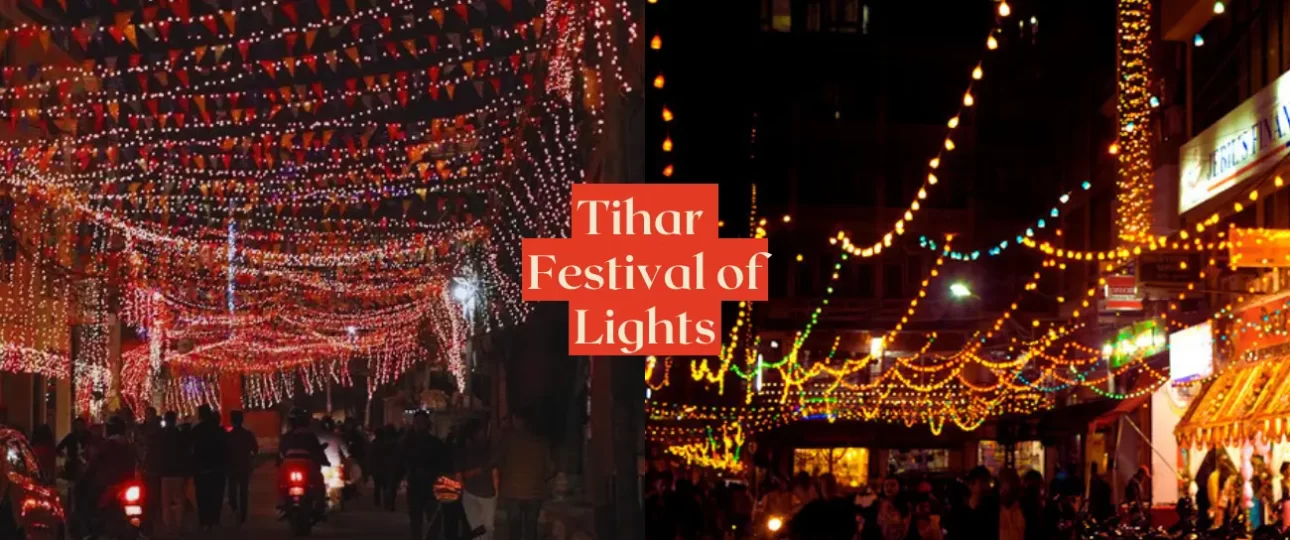Tihar Festival: Nepal’s Festival of Lights
Tihar festival, also referred to as Deepawali or Yamapanchak, is a grand festival celebrated in Nepal. It is a festival that spans five days, each dedicated to different deities, animals, and family members. It usually falls in late October or early November and is considered the second most important festival in Nepal after Dashain. Tihar signifies the victory of light over darkness and the importance of family bonds, community harmony, and nature worship.
The essence of Tihar lies in honoring animals, worshiping Laxmi—the goddess of wealth—and strengthening familial ties, especially between brothers and sisters. The festival is also marked by the lighting of oil lamps, creating intricate Rangoli designs, and sharing delicious food.
Origin of Tihar
Tihar is rooted in ancient Hindu traditions. The festival has deep connections to the story of Yama, the god of death, and his sister, Yamuna. According to legend, Yamuna invited her brother Yama to her home and performed a special ceremony to wish him a long life. This is why, on the last day of Tihar, known as Bhai Tika, brothers and sisters come together to celebrate their bond, with sisters praying for their brothers’ longevity.
Tihar festival also connects to other important deities and mythological figures. Each day of the festival has unique significance and rituals that are deeply intertwined with Hindu beliefs. From honoring the goddess Laxmi for wealth and prosperity to worshiping animals like crows, dogs, and cows, Tihar is an amalgamation of religious symbolism and cultural practices.
The Five Days of Tihar Festival
Tihar is celebrated over five days, each of which holds unique importance. Let’s break down the significance of each day.
First Day – Kag Tihar (Day of Crows)
The first day of Tihar is dedicated to crows, which are considered messengers of death in Hindu mythology. People offer food to crows to appease them and prevent bad luck. Early in the morning, offerings are placed on the rooftops or outside windows for the crows.
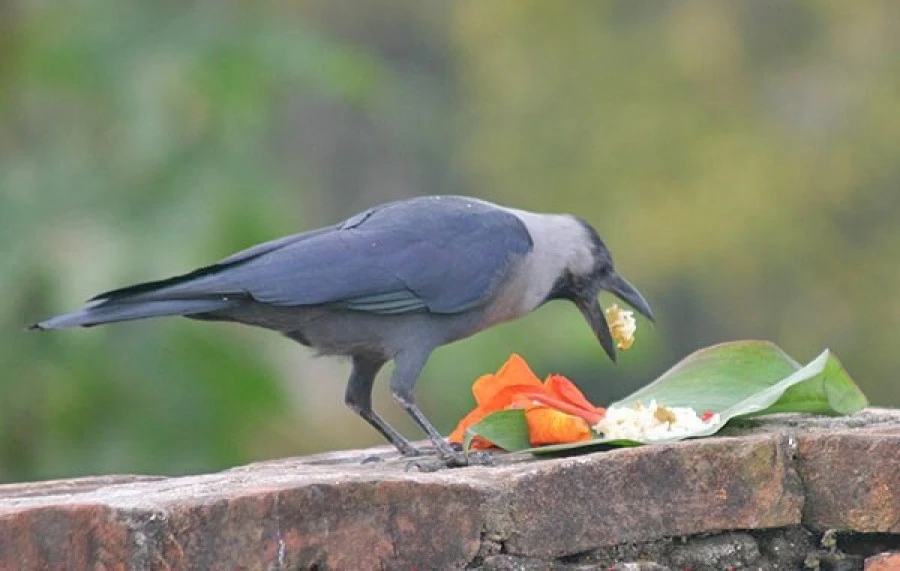
Second Day – Kukur Tihar (Day of Dogs)
The second day is all about honoring dogs. In Nepalese culture, dogs are seen as loyal protectors and the companions of Yama, the god of death. On this day, people place garlands (mala) around dogs’ necks, offer them tika, and give them special food to recognize their loyalty and service.
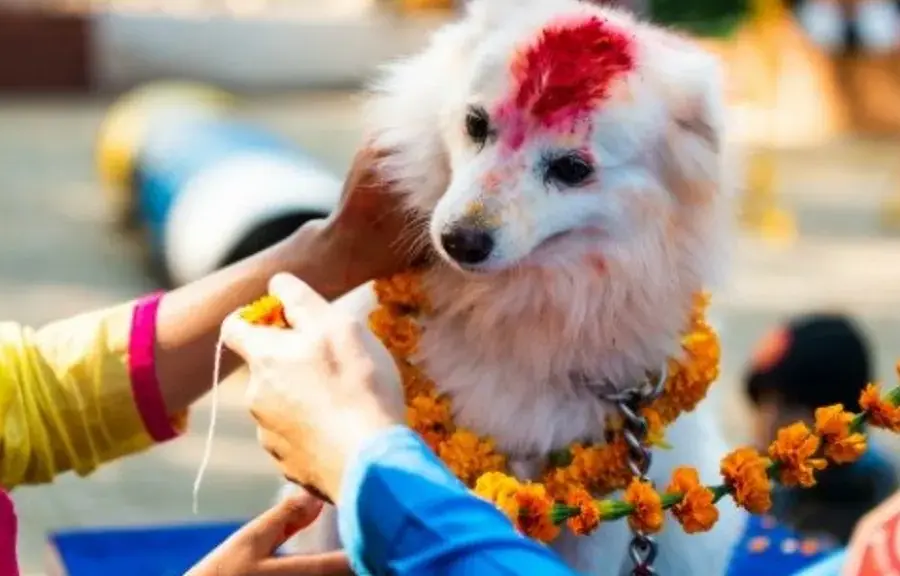
Third Day – Gai Tihar and Laxmi Puja (Day of Cows and Wealth)
The third day is the most important in the Tihar festival. It begins with Gai Tihar, where cows are worshiped as sacred animals representing motherhood and prosperity. Later in the evening, homes are cleaned and decorated with oil lamps, and the goddess Laxmi is worshiped. People pray for wealth, prosperity, and good fortune during Laxmi Puja, illuminating their homes with candles and diyas to invite the goddess.
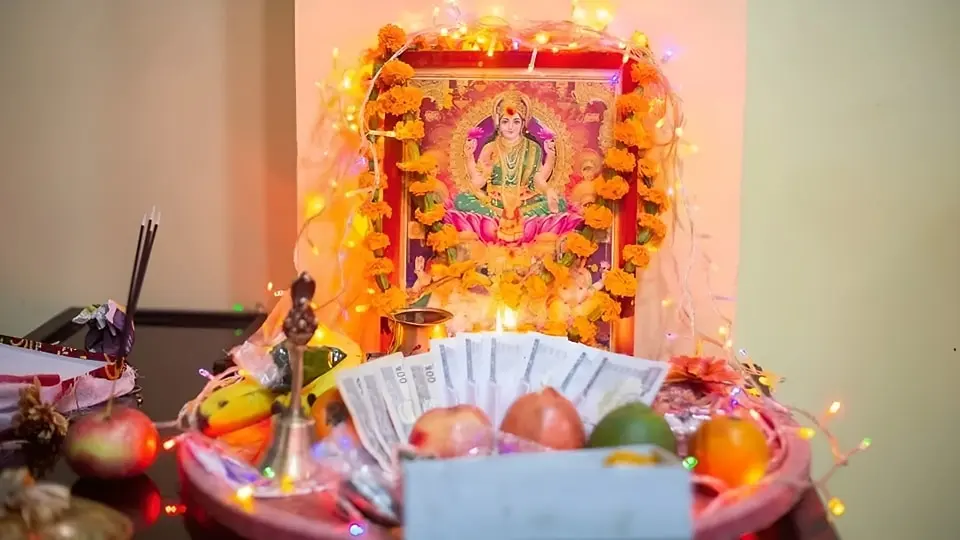
Fourth Day – Govardhan Puja and Mha Puja (Day of Oxen and Self-Worship)
On the fourth day, Govardhan Puja is celebrated to honor oxen and the importance of agriculture. In Newar communities, this day also marks Mha Puja, which is a self-worship ritual focusing on personal well-being and cleansing.
Fifth Day – Bhai Tika (Day of Brothers)
The final day of Tihar is Bhai Tika, a beautiful celebration of the bond between brothers and sisters. Sisters apply tika (a multi-colored mark) on their brothers’ foreheads and offer blessings for their long lives. In return, brothers give gifts to their sisters and promise to protect them.
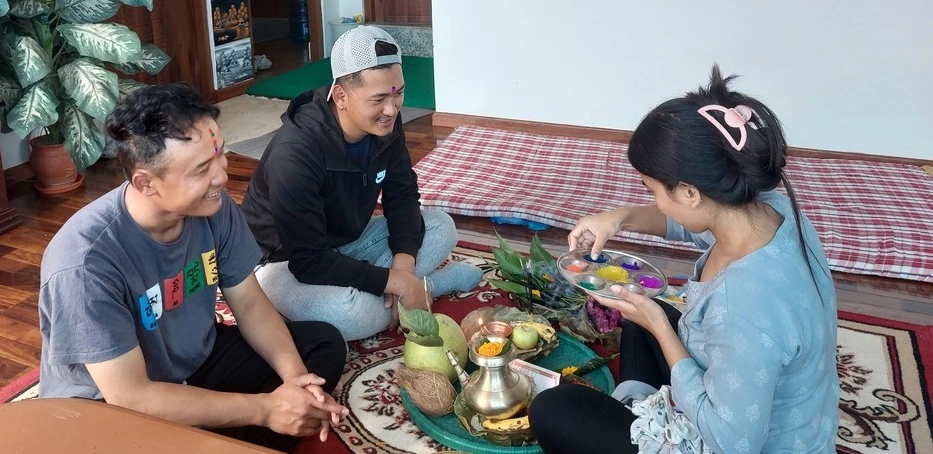
How Houses and Streets Are Decorated During Tihar?
One of the most captivating aspects of the Tihar festival is the transformation of homes and streets into vibrant, illuminated spaces filled with color and light. The decorations play a crucial role in expressing the joy and spiritual significance of the festival. From homes being lit with oil lamps to the creative use of flowers and colors, the decorations during Tihar have both religious and aesthetic purposes.
Use of Diyas (Oil Lamps)
Diyas, or oil lamps, are the heart and soul of Tihar decorations. These small clay lamps are filled with oil or ghee and lit with cotton wicks, symbolizing the triumph of light over darkness. The flickering flames of hundreds of diyas can be seen lining windowsills, doorways, balconies, and even rooftops, creating a mesmerizing glow that adds warmth and serenity to the chilly autumn nights.
In addition to homes, temples and public spaces are also adorned with rows of diyas, making the streets look like a sea of shimmering light. The lighting of these lamps is a symbolic invitation to Laxmi, the goddess of wealth, who is believed to visit homes that are clean, well-lit, and inviting.
Rangoli Art
Rangoli is another integral part of Tihar decorations. Rangoli, also known as “mandalas” in some parts of the world, are intricate patterns created on the ground, especially near doorways, using colored powders, rice, or flowers. These designs can range from simple geometric patterns to more elaborate depictions of animals, gods, and symbols of prosperity.
Rangoli art is believed to welcome the goddess Laxmi into the home. The attention to detail and use of bright colors like red, blue, yellow, and green make these patterns an artistic highlight of the festival. Flower petals, particularly marigolds and roses, are often used to add texture and fragrance to the designs, enhancing their beauty and cultural significance.
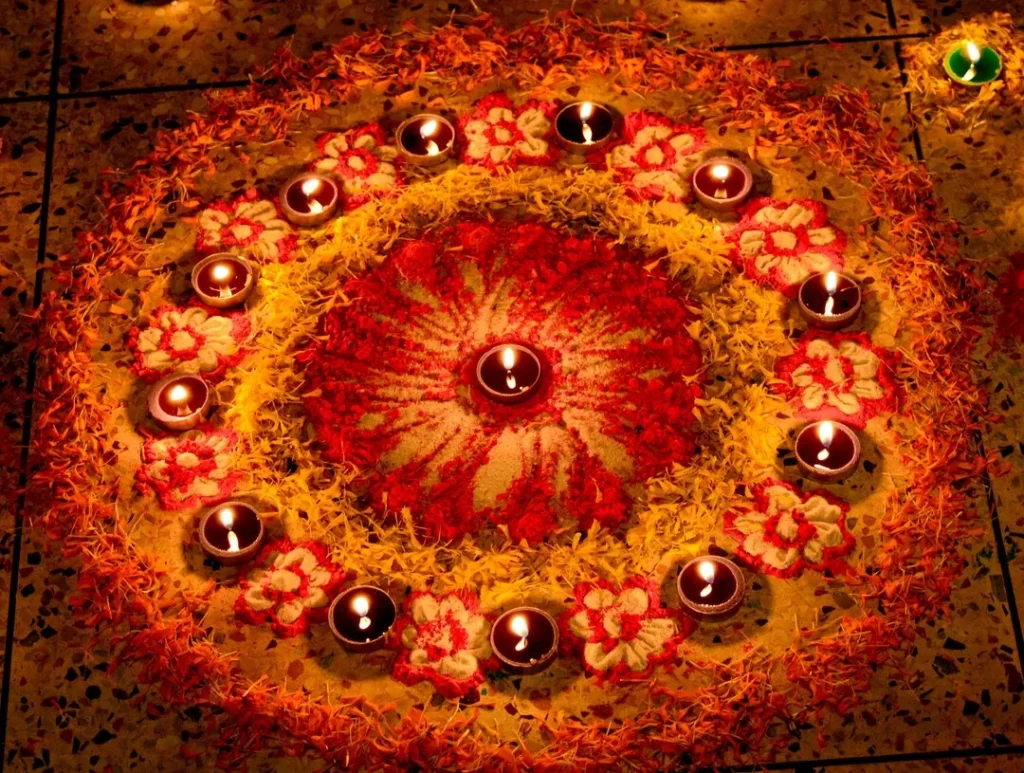
Use of Marigold Garlands and Decorations
Marigold flowers, with their bright yellow and orange hues, are essential for decorating homes during Tihar. The flowers are strung together to form garlands that are draped over doorways, windows, and altars. Marigolds are chosen not only for their vibrant color but also for their symbolism of auspiciousness and purity. Their scent is believed to ward off negative energy and invite positivity into the home.
Some households also decorate their courtyards with banana leaves and mango leaves, which are believed to purify the air and bring in a sense of freshness.
Special Food and Sweets Eaten During Tihar
Tihar festival is not just a visual feast but also a culinary one. Special foods, especially sweets, play a significant role in the celebration, as they are shared among family members, neighbors, and friends. Food offerings are made to both gods and animals during the festival, showcasing a deep connection between spirituality and daily life.
Sel Roti – A Festive Delight
Sel Roti is a unique and much-loved dish during Tihar. It’s a ring-shaped, slightly crispy rice flour bread that is deep-fried to perfection. Sel Roti holds a special place in the hearts of Nepalese people, as it’s a dish that is both traditional and festive. Preparing Sel Roti requires skill, as the batter needs to be poured in circular motions into hot oil to achieve its signature shape. Often served with achar (pickle) or yogurt, Sel Roti is a must-have during Tihar and is typically prepared in large quantities to share with guests and family.
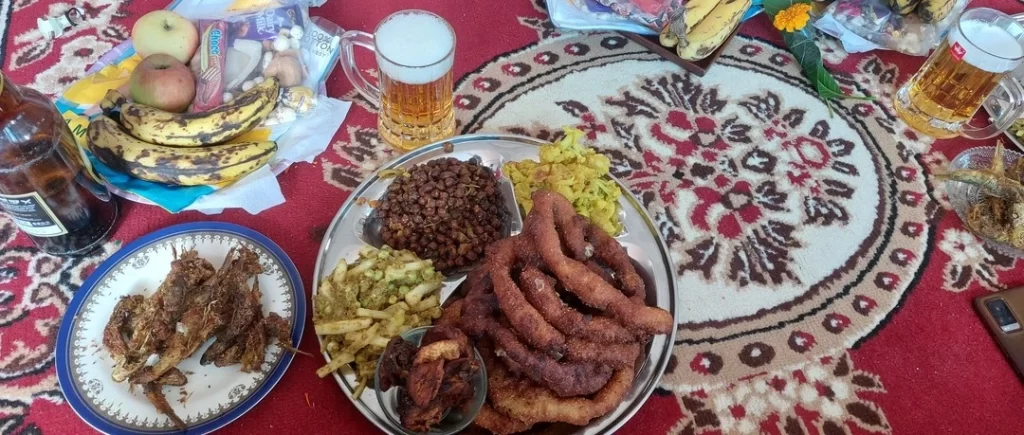
Sweets and Offerings
Alongside Sel Roti, other traditional sweets like laddus (sweet balls made from flour and sugar), barfi (a dense milk-based sweet), and halwa (a pudding-like dish) are prepared. These sweets are shared during social gatherings and are offered to the deities as part of religious ceremonies. Families also prepare large plates of offerings called “bhog,” which include fruits, sweets, and other delicacies that are first presented to the gods and then shared with family members.
Tihar and Animal Worship
One of the most unique aspects of Tihar is its focus on the worship of animals. While many festivals across the world focus on gods or humans, Tihar stands out for its reverence for animals, reflecting the deep respect that Nepalese culture has for all living beings.
Each day of Tihar is dedicated to the worship of different animals, beginning with crows, which are believed to be the messengers of Yama, the god of death. Offering food to crows on the first day is a way of respecting life and death. The second day, known as Kukur Tihar, is perhaps the most beloved, as it is dedicated to honoring dogs. In Nepalese culture, dogs are seen as loyal protectors and are believed to guide the souls of the deceased to the afterlife. On this day, dogs are adorned with tika, flower garlands, and are given special treats as a token of love and gratitude.
Similarly, cows are honored on the third day for their role in agriculture and their symbolic connection to motherhood and prosperity. Cows are revered in Hindu culture as sacred animals, and during Tihar, they are bathed, garlanded, and offered the best grass and food.
Traditional Games and Activities During Tihar Festival
Tihar festival is not only about rituals but also about entertainment and fun. Families and communities engage in traditional games and music, bringing people together in the spirit of joy and unity.
Deusi-Bhailo: The Musical Tradition
Deusi and Bhailo are traditional forms of song and dance that are performed during Tihar. Groups of people, usually young boys and girls, go from house to house singing Deusi and Bhailo songs, which are blessings for prosperity and happiness. In return, the hosts offer money, food, and other gifts. This custom is similar to carol singing during Christmas in Western cultures. It’s a way for communities to connect and celebrate together, with songs often accompanied by dancing and the beat of traditional drums.
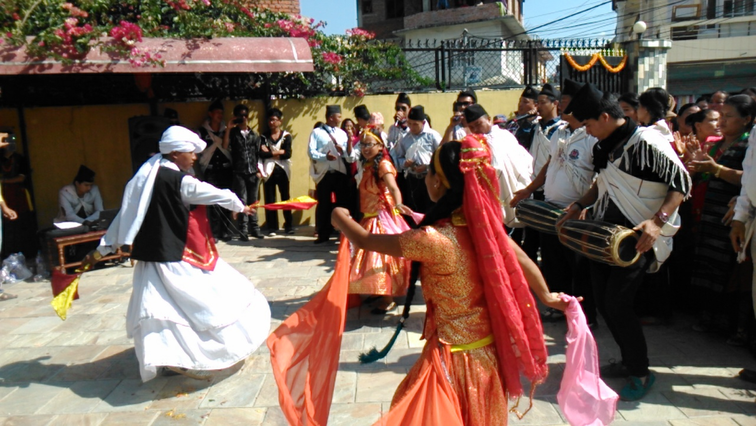
Playing Cards
Another popular activity during Tihar is playing cards. Families gather in the evenings to play card games, which is seen as a way to bond with loved ones. It’s believed that playing cards during Tihar brings good luck and prosperity for the coming year.
Tihar in Different Parts of Nepal
While Tihar is celebrated throughout Nepal, the way the festival is observed can vary slightly depending on the region. Each area has its own unique customs and practices, adding diversity to the festival.
In the Kathmandu Valley, Tihar is celebrated with grandeur. Streets are lined with glowing oil lamps, and large-scale community events are held. The houses in the cities are often adorned with more elaborate decorations, and the streets become lively with people participating in Deusi-Bhailo or visiting each other’s homes.
In rural areas, the focus of Tihar tends to be more on traditional practices. The festival is celebrated with a greater emphasis on rituals and community gatherings. Animal worship, making offerings to the gods, and singing traditional songs remain the heart of the festival in these regions.
Conclusion
Tihar is a celebration that goes beyond the superficial—it is a festival rich in cultural, religious, and environmental values. Through the lighting of lamps, creating Rangoli, honoring animals, and strengthening family bonds, Tihar represents the beauty of life, the joy of community, and the significance of nature. Whether you are observing the rituals of Laxmi Puja or taking part in the fun of Deusi-Bhailo, Tihar is a festival that touches the hearts of everyone in Nepal.
FAQs about Tihar Festival
What is the significance of lighting diyas during Tihar?
Lighting diyas is meant to ward off darkness and evil, inviting the goddess Laxmi into homes for wealth and prosperity.
Why are animals like crows, dogs, and cows worshiped during Tihar?
These animals hold spiritual significance in Hindu culture, symbolizing loyalty, protection, and prosperity. Their worship reflects a respect for all living beings.
What is Bhai Tika, and why is it important?
Bhai Tika is the final day of Tihar, celebrating the bond between brothers and sisters. Sisters offer prayers for their brothers’ long lives, and brothers give gifts in return.
How is Sel Roti made, and why is it special during Tihar?
Sel Roti is made from rice flour batter, deep-fried into circular shapes. It is a traditional dish served during Tihar, symbolizing festivity and togetherness.
What role does Deusi-Bhailo play during Tihar?
Deusi-Bhailo is a singing and dancing tradition where groups visit homes to perform songs in exchange for gifts. It promotes community bonding and joy during the festival.
